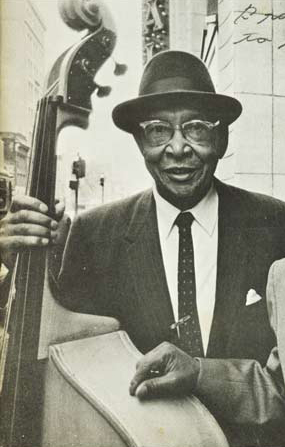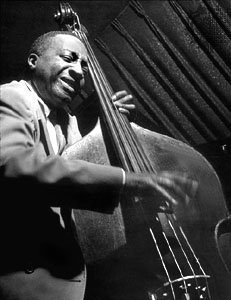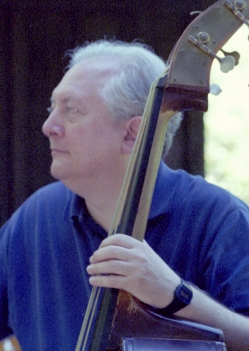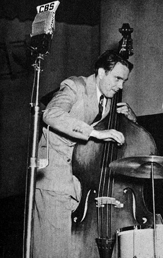Milt Hinton once said the bassist is 'the Atlas of the jazz band' because he (or she) carries the rest of the band on his shoulders. The Jim Cullum Jazz Band honors timekeepers of the band everywhere, and we remember legendary bassists Milt Hinton and Bob Haggart; also in the spotlight— Jim Cullum Jazz Band bassist Don Mopsick.
In jazz, the bass instrument functions as the bridge between rhythm and harmony—providing a strong beat and the root notes of the chords. In the early history of jazz, the instruments used in this foundational role were the string bass, the tuba and the bass saxophone.
Beginning in the post-WWI era, peppy, spirited jazz bands rose in popularity, playing for crowds in large, noisy urban dance halls. In these settings, bandleaders preferred the louder tuba and bass saxophone over the softer, more subtle string bass. Typically, the jazz bassist of that era was expected to be proficient in both the tuba and string bass.
Even when the big fiddle was used, projection was a problem in those pre-amplified days. The original New Orleans bass fiddle players perfected a "slap" technique that enabled the bass to be heard above the band. Milt Hinton (1910-2000) said that when he was coming up in Chicago, "the bass player had better play his solos in the slap style, or else he would never get another solo."

Pops Foster. Photo SF Trad Jazz Foundation.
The New Orleans master considered to be the father of jazz bass was Bill Johnson (1872-1972). A pioneering jazz bandleader in his own right, Johnson often worked with bands led by King Oliver and Johnny Dodds in Chicago in the 1920s.
Other New Orleans jazz men who followed Johnson were Al Morgan (1908-1974), who played with Jelly Roll Morton and Cab Calloway; Steve Brown, who played with Jean Goldkette and Paul Whiteman; and Wellman Braud, who played with Duke Ellington. The most famous of the New Orleans bass men was George "Pops" Foster, who worked in bands led by Louis Armstrong and many others.
Bob Haggart (1914-1998) was the bassist of the Bob Crosby Bobcats, a popular band of the 1930s that adhered to the principles of the New Orleans sound in jazz. Bob said, "[The] big chomping sound Pops Foster got out of a bass was a driving force and inspiration to me for many years. There was a primitive quality to this sound which appealed to me and it played a large part in my background and influenced my concept of bass playing...."
The New Orleans bass players functioned as "spark plugs" in the rhythm sections of the band they played in, adding that special driving rhythm that characterized hot jazz. But, with the advent of electric microphones and recording, basses could be heard more clearly, and the strident New Orleans slapping style gave way to the subtler, more even sounding 'pizzicato' method of Count Basie bassist Walter Page. Further reinforced and developed by Jimmy Blanton and Ray Brown, this is the style that has dominated jazz bass playing up to the present time.
Photo credit for Home Page: Milt Hinton, 1992. Photo copyright Robert Asman.
Text based on Riverwalk Jazz script by Margaret Moos Pick ©2003




